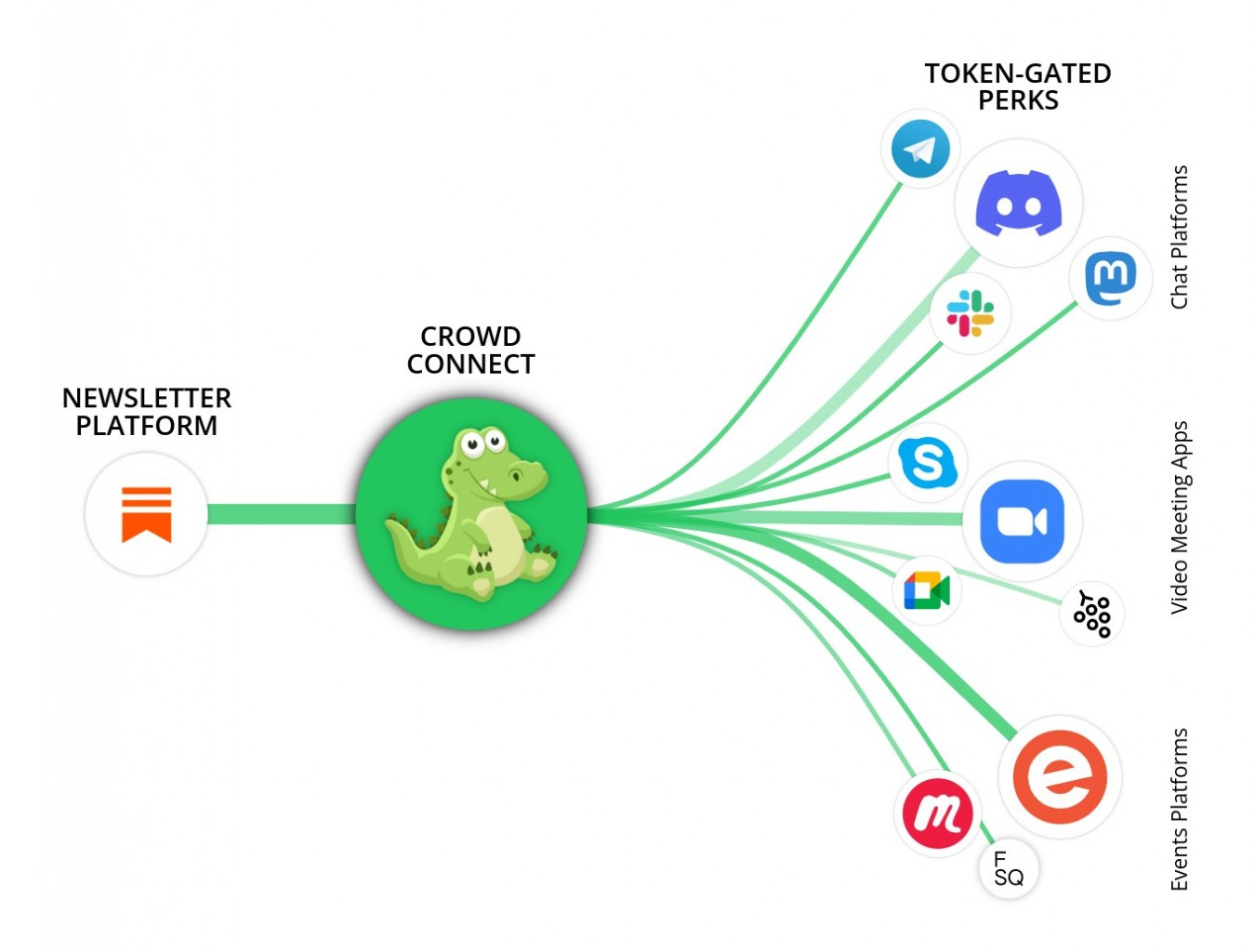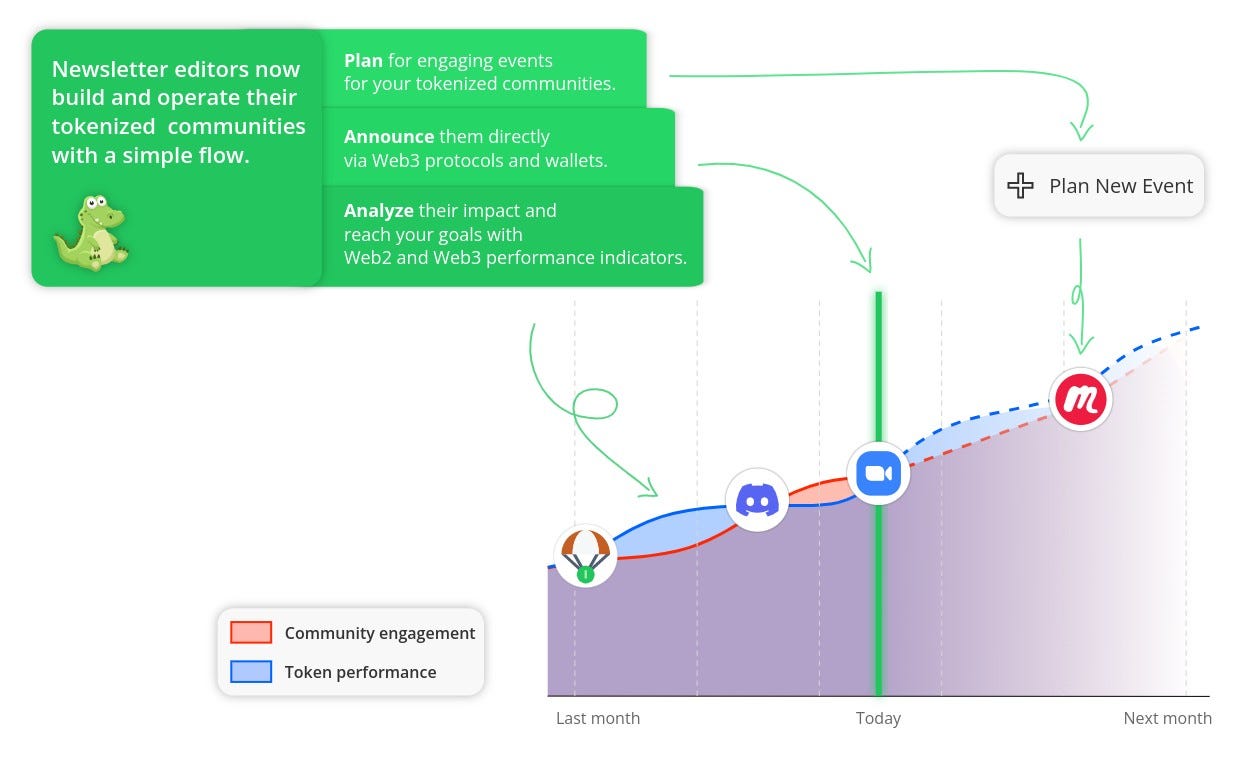While next-gen newsletters have enjoyed a strong comeback over the past few years, the recent announcement that 14 percent of the Substack publishing platform's workforce has been laid off raises questions. Is this the beginning of the end or the dawn of a revival?
A format that offers many advantages...
Substack, Ghost, Revue by Twitter... so many platforms that have brought the newsletter format back to life, which had previously fallen out of fashion. To do so, these players have been able to rely on an attractive promise, namely the guarantee of editorial and financial freedom for content creators and a stronger relationship with their audiences.
As I explained back in 2020, a whole market of tools has gradually developed to support newsletter editors, whether they are journalists looking for independence, experts in their niche or curators. The goal? Independence, of course, but also monetization. While subscriptions have proven to be the privilege of a happy few — there are nevertheless a million paying subscribers on Substack — many creators have found alternatives to generate additional revenue, with their newsletter acting as a lead generation funnel opening the door to speaking opportunities, consulting gigs or monetizing additional reports or whitepapers.
It’s a format has many advantages. First, and certainly not the least: it allows one to be free from the algorithms tied to social platforms. Moreover, the newsletter reinforces the feeling of proximity: we subscribe to an author above all because we are looking for a direct link to their personality, their vision and their editorial style. It is this very special, intimate connection that probably explains the exceptional opening rates of these newsletters, i.e., between 50 and 60 percent, compared to an average of 30 percent for a classic B2B or B2C newsletter.
...but which has not yet delivered all its promises!
However, this format is not without its drawbacks. For example, persuading young people to subscribe to a paid service remains a crucial problem. According to the Digital News Report published by the Reuters Institute, the average age of a subscriber to a paid news source is 47 years old.
Then there are the — too long — delays in the deployment of new services. Substack is often accused of being slow to integrate new features. Although features such as newsletter recommendations are arriving slowly, there is still a lot of work to be done to help creators viralize their writing and grow their subscriber bases.
Finally, in a more broader sense, we can say that the experiences around newsletters remain compartmentalized and somewhat basic. Based on an archaic technology, they have difficulty integrating into more complete experiences, while younger audiences are looking for richer interactions like the ones they get from platforms such as TikTok.
Transforming audiences into communities.
Beyond these issues, the real challenge is implementing a strong community approach around the content: "Come for the content, stay for the community" as the saying goes!
And that's not all. As Sari Azout explains: "What I find interesting is the difference between public and participative content. Content can be public and accessible to everyone, but that doesn't mean it's open to everyone's participation, you have to get involved and subscribe if you want to participate and have a relationship with the creator." In other words, some fans are willing to pay to build a form of exchange with an author: something to explore in new business models... Not to mention that a community really becomes a community when the interactions in the group take place without the involvement of the creator!
This is where the concept of a tokenized community comes in. In essence, it is a community that is built and evolves via a token that takes the place of an organizational element by integrating voting objectives related to financing, planning, etc. While this model is still in its infancy, services in this niche have multiplied in recent months. If Web3 tools like Coinvise allow for developing tokenized communities whatever the sector, there are also tools dedicated specifically to content creators such as Mirror or Paragraph, which is positioned as a direct competitor of Substack. How so? By offering a complete editor experience with Web2 features — free post publishing, custom domain names... — but going a step further by adding a Web3 brick that was previously non-existent in other publishing tools. Among these new features, let's mention the possibility of subscribing via a wallet, the integration of NFT memberships, access to off-platform advantages for token holders or even publications hosted on Arweave's permaweb, which is censorship resistant.
Crowd Connect, a new French tool.
And then there's Crowd Connect, the new kid on the block that almost nobody has heard of — yet — since it’s in stealth mode. Developed by Polyphene, a blockchain-oriented startup that also develops applications for large groups, institutions and the broader public, its value proposition is simple: bridge the gap between the newsletter and other platforms, which will enrich the experience and create engagement. Here, with a simple token-gating brick, a new experience is created, based on the newsletter but truly multimedia and multi-channel. Finding the same members on all the channels should thus enable to create a community experience. Its advantage over Paragraph? An interoperable solution, regardless of the initial publishing platform (Substack, Revue, etc.) and community engagement tools (Discord, etc.) used. "Our service integrates with the stacks already used by newsletter publishers to allow them to activate the full range of interactions opened up by community tokenization. In just a few clicks, they can plan the triggering of events and privileges — token-gated perks — and measure their impact on the level of engagement of their audience," summarizes Philippe Métais, its co-founder.
"Each community has its own interaction and engagement modes: while younger audiences often favor visual content, others value physical events or exclusive merchandising. The challenge is to instill the token experience into the pre-existing habits of users. It's up to tokenization to get in and augment the experience, not for each community to produce an additional effort." he stresses.
"By breaking with the predatory models and the captivity imposed by platforms that marked the era of surveillance capitalism — to use the concept developed by Shoshana Zuboff — Web3 tokens and protocols offer a more open, more horizontal medium. As a result, the places where value is created are migrating to the very heart of communities, where new centers of power are emerging," emphasizes Philippe Métais.
When will brand newsletters be reinvented, optimized and able to transform audiences into engaged communities? Will federations of publishers soon emerge thanks to these new protean Web3 models? As you can see, this format has not said its last word.
MD








you have to be really disconnected from communities to think web3 is going to work, most these users are brain dead.